Navigating the Nuances of Mild Autism
Mild autism, often characterized by subtle social communication challenges, repetitive behaviors, and sensory sensitivities, presents unique opportunities and challenges for individuals and their families. Unlike more pronounced forms of autism, these characteristics may be less obvious but can still significantly impact daily functioning and quality of life. Early diagnosis and tailored intervention strategies, particularly those grounded in applied behavioral sciences, are critical to fostering development and independence. This article explores the nature of mild autism, the role of Applied Behavior Analysis (ABA) therapy, other supportive interventions, and the importance of collaborative care involving families and professionals.
What Is Mild Autism? Defining the Spectrum’s Lighter End
Definition and Characteristics of Mild Autism
Mild autism, often referred to as Level 1 autism spectrum disorder (ASD), is characterized by challenges primarily in social communication and interaction. Unlike moderate or severe forms, individuals with mild autism experience less intense difficulties but still face notable struggles that affect daily functioning. These may include difficulties interpreting social cues and engaging naturally in conversations or social interactions.
Social Communication Challenges and Repetitive Behaviors
People with mild autism often find it hard to understand nonverbal behaviors like facial expressions, body language, and tone of voice. Engaging in small talk or initiating and maintaining conversations can be challenging. Repetitive behaviors, such as hand-flapping, rocking, or an intense focus on specific interests, are also common and may provide comfort or routine. A strict adherence to routines can cause stress if disrupted.
Sensory Sensitivities and Coping Mechanisms
Sensory sensitivities are a significant aspect of mild autism, presenting as either hypersensitivity (overreaction) or hyposensitivity (underreaction) to environmental stimuli like sounds, lights, or textures. Individuals often develop coping strategies such as using sensory tools (e.g., noise-canceling headphones) or modifying their surroundings to soothe or manage sensory overload.
Common Issues Like Underdiagnosis and Autistic Burnout
Because symptoms of mild autism are often subtle and overlap with other conditions, underdiagnosis or misdiagnosis is frequent. This can lead to insufficient support and increased stress. Many with mild autism experience autistic burnout—a state of physical and mental exhaustion caused by prolonged coping with social and sensory demands without adequate relief or assistance.
These characteristics highlight the nuanced and varied experiences of those on the milder end of the autism spectrum, emphasizing the need for tailored recognition and support.
Applied Behavior Analysis (ABA) Therapy: A Cornerstone for Supporting Mild Autism
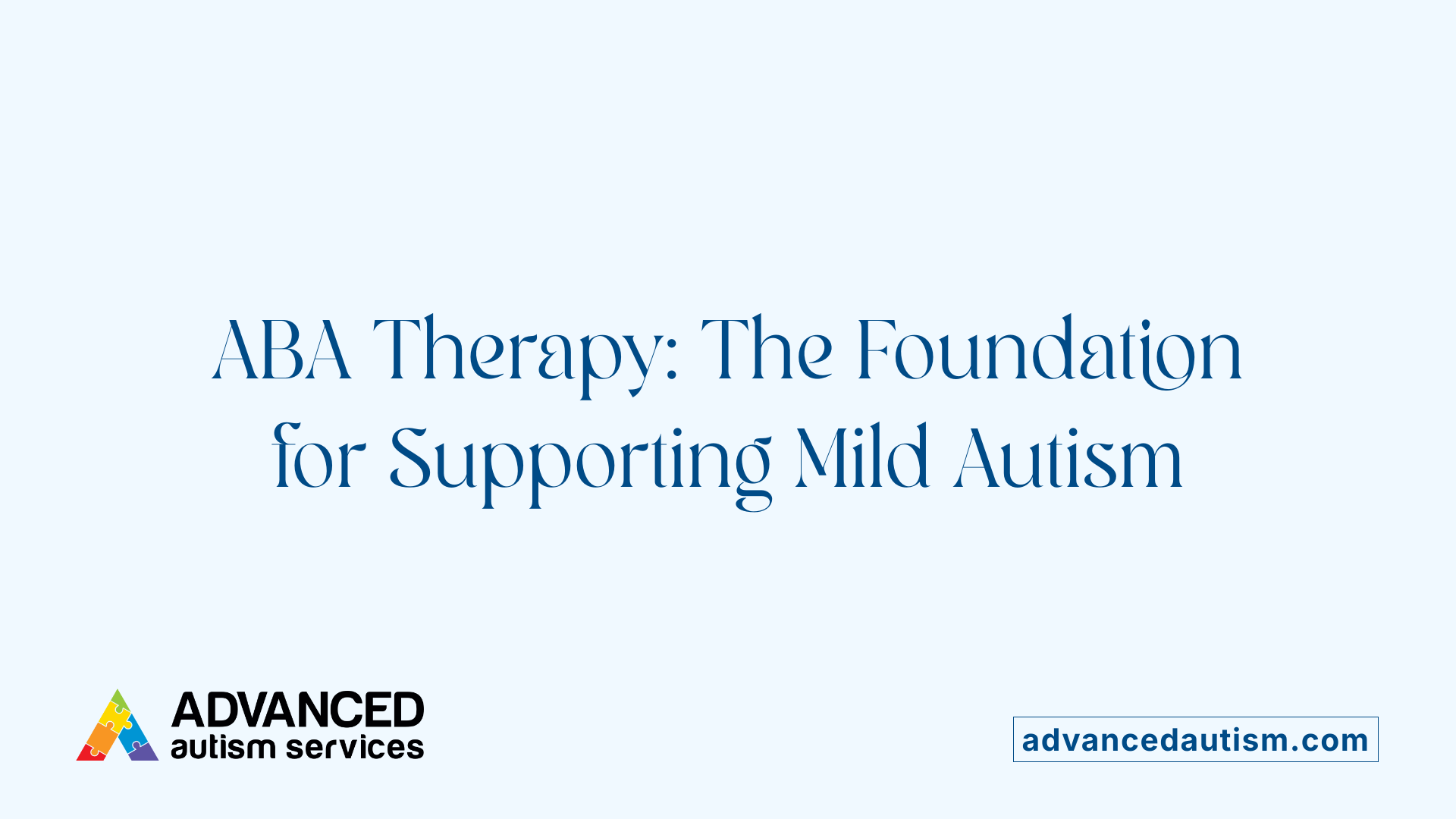
What is Applied Behavior Analysis (ABA) therapy and how is it used to support individuals with autism?
Applied Behavior Analysis (ABA) therapy is a scientifically supported approach based on learning theory that focuses on modifying behaviors by understanding their triggers and consequences. It is used extensively to support individuals with autism, including those with mild autism spectrum disorder (ASD).
ABA therapy aims to increase helpful behaviors—such as communication, social interactions, and self-care—and decrease harmful or hindering behaviors. This is achieved by analyzing the antecedents (what happens before a behavior), the behavior itself, and the consequences (what happens after), often referred to as the ABC framework. Through this, therapists can develop targeted interventions that encourage positive behaviors.
One common technique used in ABA is positive reinforcement, where desirable behaviors are rewarded to encourage their repetition. For example, a child might receive praise or a small reward when they successfully initiate communication. The therapy involves structured teaching methods such as discrete trial training (DTT), which breaks skills into small steps, and pivotal response treatment (PRT), a play-based approach that targets critical skills like motivation and communication initiation.
ABA programs are individualized to each person's unique needs and are designed and supervised by professionals like Board Certified Behavior Analysts (BCBAs). The therapy can be delivered in various settings—including homes, schools, and clinics—and frequently involves caregivers to ensure consistency. Overall, ABA encourages meaningful learning, skill development, and greater independence, making it a highly recognized intervention to support individuals with mild ASD effectively.
Who Provides ABA Therapy? Understanding Qualifications and Roles
Who typically provides ABA therapy and what qualifications should they have?
ABA therapy is delivered by a team of trained professionals specializing in behavior analysis to ensure effective treatment. The primary providers include Board Certified Behavior Analysts (BCBAs), Registered Behavior Technicians (RBTs), and Board Certified Assistant Behavior Analysts (BCaBAs).
Types of ABA providers: BCBAs, RBTs, BCaBAs
- Board Certified Behavior Analysts (BCBAs): BCBAs hold graduate degrees and have completed extensive supervised fieldwork along with passing a certification exam administered by the Behavior Analyst Certification Board (BACB). They are responsible for designing, overseeing, and adjusting individualized ABA therapy programs.
- Registered Behavior Technicians (RBTs): RBTs are paraprofessionals who implement ABA therapy plans under the direct supervision of a BCBA or BCaBA. They must complete a 40-hour training program, pass a competency exam, and receive ongoing supervision.
- Board Certified Assistant Behavior Analysts (BCaBAs): BCaBAs have undergraduate degrees and work under the supervision of BCBAs. They assist with implementing and monitoring treatment programs.
Training and certification requirements
Each provider type undergoes specific training and certification to ensure competence:
- BCBAs undergo graduate education, extensive clinical experience, and rigorous certification.
- RBTs complete foundational training, a skills competency assessment, and maintain ethical conduct under supervision.
- BCaBAs combine undergraduate education with supervised practice and certification.
Differences in roles and responsibilities
While BCBAs design and oversee therapy interventions, RBTs execute therapy sessions directly with clients. BCaBAs often bridge these roles by assisting BCBAs and providing direct therapy under supervision. These role distinctions allow a collaborative, multidisciplinary approach tailored to client needs.
Importance of qualified professionals for effective therapy
Engaging qualified and certified ABA professionals is crucial for delivering scientifically grounded and ethical therapy. Professional credentials ensure practitioners have mastered behavior analytic principles, assessment techniques, and evidence-based intervention strategies necessary to maximize therapy progress and client well-being.
Behavioral Challenges Addressed by ABA in Mild Autism
Communication Difficulties and Social Interaction Problems
Individuals with mild autism often face challenges in communication and social interactions, such as interpreting social cues, initiating or maintaining conversations, and understanding nonverbal behaviors. ABA therapy targets these difficulties by teaching functional communication skills and social engagement strategies. Techniques like pivotal response treatment focus on pivotal behaviors such as motivation and initiation of communication, encouraging spontaneous interactions.
Repetitive Behaviors and Sensory Sensitivities
Repetitive behaviors—like hand-flapping or rocking—and sensory sensitivities are common in mild autism. ABA programs analyze these behaviors using the ABC (Antecedent-Behavior-Consequence) framework to understand triggers and develop tailored interventions. Positive reinforcement is used to reduce problematic repetitive behaviors while sensory integration strategies may be incorporated through occupational therapy to help manage sensory reactions.
Adaptive and Daily Living Skills
ABA therapy plays an important role in fostering adaptive skills critical for daily living. These include self-care tasks such as dressing, eating, and personal hygiene. Through individualized programs, ABA helps build independence by breaking skills into manageable steps and reinforcing successful completion. Progress is monitored regularly to adjust goals and support ongoing development.
Use of Alternative Communication Methods
For individuals who struggle with verbal communication, ABA facilitates the use of alternative communication methods like the Picture Exchange Communication System (PECS) and functional communication training. These strategies replace harmful or non-functional behaviors with effective ways to express needs and desires, improving overall quality of life.
Addressing Behavioral Issues in Mild Autism with ABA
ABA therapy comprehensively addresses a broad spectrum of behavioral challenges faced by individuals with mild autism. It effectively reduces problematic behaviors such as aggression, tantrums, and self-stimulatory actions by reinforcing positive behaviors and modifying environmental triggers. The therapy also promotes social skills and independence through data-driven, personalized interventions, ensuring that each individual's unique needs are met to enhance their everyday functioning.
Measuring the Success of ABA Therapy: Data and Outcomes
How is the effectiveness of ABA therapy typically measured?
ABA therapy effectiveness is primarily measured through continuous data collection on specific targeted behaviors. Therapists record metrics such as frequency, duration, latency, and percentage of correct responses during sessions. This ongoing collection allows precise monitoring of behavioral changes and skill improvements over time.
Continuous data collection methods
Data gathering occurs daily during therapy using direct observation and structured recording systems. These methods ensure objective tracking of behaviors and interventions, allowing therapists to adjust techniques dynamically based on results.
Use of standardized assessments like VB-MAPP
Standardized tools such as the Verbal Behavior Milestones Assessment and Placement Program (VB-MAPP) assess essential language, social, and learning milestones. These assessments guide treatment planning by identifying strengths and developmental gaps, making them invaluable for individualized ABA programs.
Tracking progress with graphs and reports
Therapy progress is visually represented through graphs and reports illustrating trends in behavior and skill acquisition. These visual aids help therapists, parents, and caregivers understand improvements clearly and make data-driven decisions regarding goals and techniques.
Need for long-term studies and quality-of-life measurements
While many studies demonstrate ABA's positive impact on communication, social skills, and adaptive behaviors, larger, prospective, and long-term studies remain necessary. Current research points to a lack of comprehensive data on quality of life outcomes, underscoring the importance of including such measures in future research to fully understand ABA's extended effects.
| Measurement Aspect | Description | Importance |
|---|---|---|
| Continuous Data Collection | Frequency, duration, latency tracking | Enables detailed monitoring and timely adjustments |
| Standardized Assessments (VB-MAPP) | Structured testing of developmental milestones | Guides goal setting and individualization |
| Visual Progress Tracking | Graphs and reports on behavior changes | Facilitates clear communication with families |
| Long-term and QoL Studies | Prospective trials including quality of life | Essential for understanding sustained therapy impact |
Family and Caregiver Involvement: Partnership in ABA Therapy
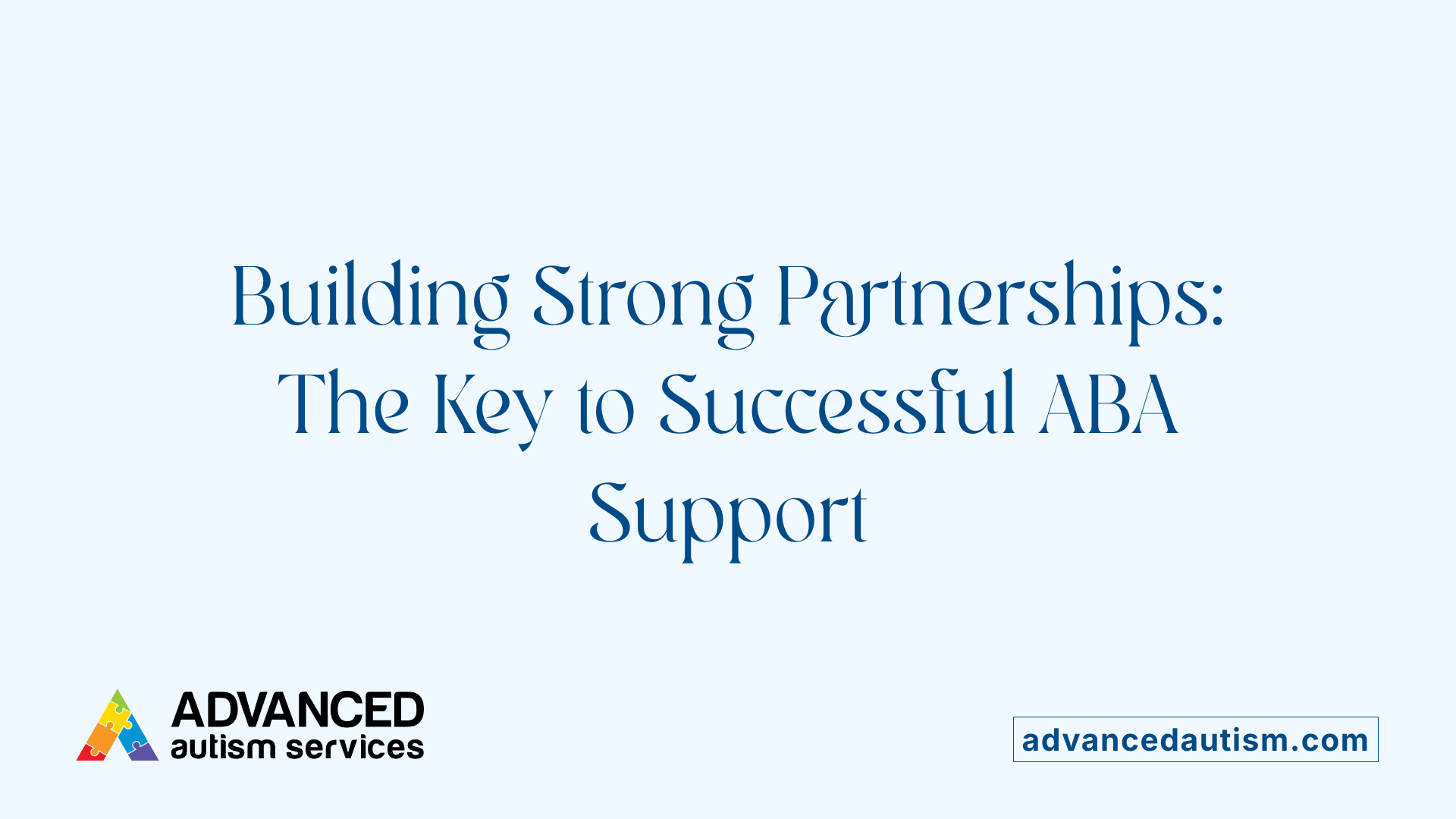
What role do families and caregivers play in ABA therapy?
Families and caregivers are vital partners in ABA therapy, contributing to its success by participating actively in the intervention process. Their role extends beyond therapy sessions, reinforcing learned skills at home, school, and in the community to help generalize and maintain progress.
Parent training and education
Effective ABA programs include training and educating caregivers to teach them ABA principles and techniques. This empowerment allows families to apply consistent reinforcement strategies, recognize behavioral cues, and support new skills daily, creating a cohesive support system.
Overcoming barriers to involvement
Challenges such as caregiver stress, time constraints, cultural differences, and socioeconomic factors can hinder family involvement. Addressing these barriers through flexible scheduling, culturally sensitive communication, and resource support is essential to promote sustained engagement.
Impact on therapy outcomes
Research and clinical experience show that when families are active collaborators, children demonstrate stronger skill acquisition, reduced problem behaviors, and better generalization. This partnership maximizes therapy effectiveness and encourages progress toward greater independence.
Complementary and Developmental Therapies Supporting Mild Autism
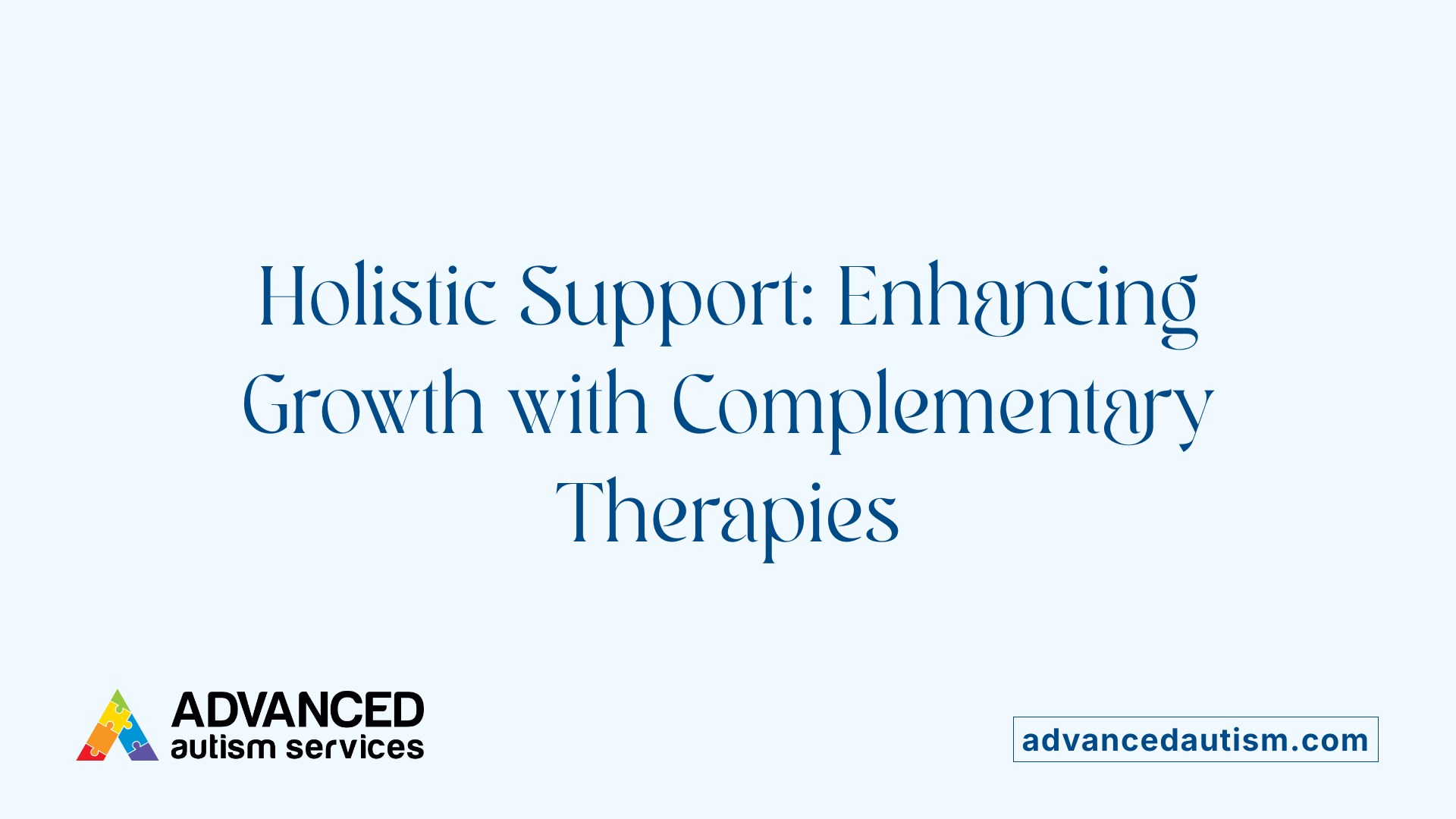
What is Speech and Language Therapy?
Speech and language therapy is a common developmental method used for individuals with mild autism. It focuses on enhancing communication skills, including understanding both verbal and nonverbal cues. This therapy helps address social communication challenges, such as difficulties with making eye contact, interpreting facial expressions, and engaging in conversations, which are often experienced by people with mild autism.
How Does Occupational Therapy and Sensory Integration Help?
Occupational therapy aids individuals with mild autism in gaining greater independence in daily activities such as dressing, eating, bathing, and social interactions. A key component of this therapy is sensory integration, which helps manage sensory sensitivities that are common in autism. Sensory integration therapy works by supporting individuals in coping with overreactions or underreactions to various stimuli through environmental modifications and sensory tools.
What Are Developmental Approaches Like the Early Start Denver Model?
Developmental approaches combine behavioral principles with play and social interaction. The Early Start Denver Model (ESDM), suitable for children aged 12 to 48 months, is a broad developmental method based on ABA principles. It focuses on improving language, social, emotional, and cognitive skills through naturalistic interactions involving therapists, parents, and family members during daily routines and play.
What Role Do Social-Relational Strategies and Psychological Support Play?
Social-relational strategies include therapies such as DIR (Developmental, Individual-difference, Relationship-based), RDI (Relationship Development Intervention), social stories, and social skills groups. These approaches aim to improve social skills and emotional connections, often engaging parents and peers in the process. Psychological support like cognitive-behavior therapy (CBT) assists individuals in managing anxiety, depression, and behavioral challenges by changing thought patterns and reactions.
| Therapy Type | Focus Area | Key Benefits |
|---|---|---|
| Speech and Language Therapy | Communication Skills | Enhances verbal/nonverbal understanding and social engagement |
| Occupational Therapy | Daily Living & Sensory Integration | Promotes independence and helps manage sensory sensitivities |
| Early Start Denver Model (ESDM) | Language, Social, Cognitive Skills | Improves development through play-based interventions |
| Social-Relational Strategies | Social Skills & Emotional Bonds | Builds social competence and emotional connection |
| Cognitive-Behavior Therapy (CBT) | Emotional and Behavioral Support | Helps manage anxiety and improve coping mechanisms |
Innovative ABA Techniques: From Discrete Trial Training to Naturalistic Teaching
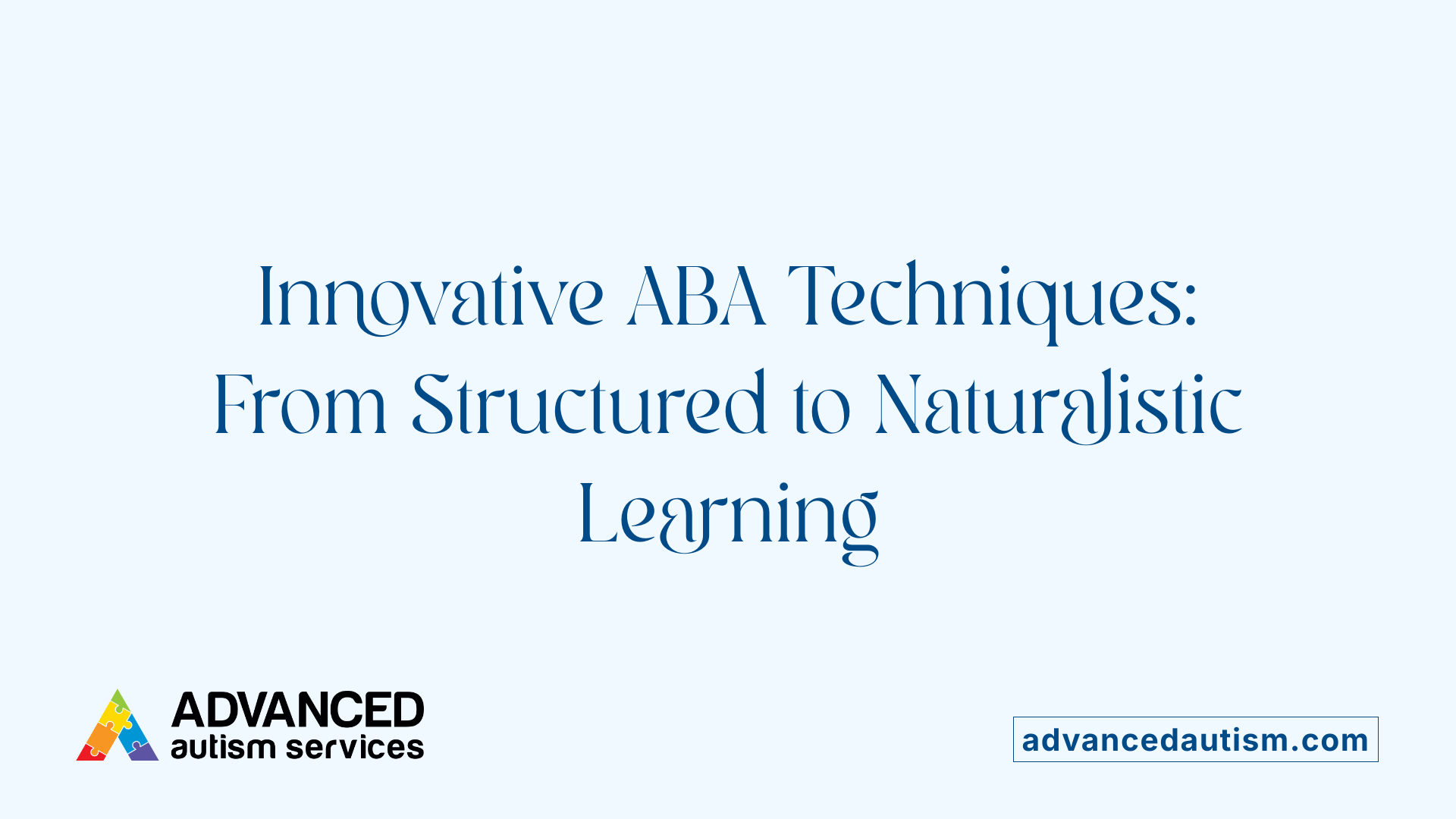
What is Discrete Trial Training (DTT)?
Discrete Trial Training (DTT) is a structured ABA technique that breaks skills into small, manageable steps. Each trial involves a clear instruction from the therapist, a prompt if needed, the child's response, and then a consequence such as positive reinforcement when the desired behavior occurs. This step-by-step approach provides consistent practice and immediate feedback, making it effective for teaching language, social, and academic skills.
How does Pivotal Response Treatment (PRT) use play to teach?
Pivotal Response Treatment (PRT) is a naturalistic, play-based ABA method focusing on pivotal areas like motivation and self-initiation. Rather than structured trials, PRT encourages learning through child-led activities and natural reinforcement, making the process enjoyable and relevant. It targets communication and social skills by engaging children in game-like tasks that stimulate interest and spontaneity.
What are naturalistic and peer-mediated interventions?
Naturalistic interventions occur in everyday settings such as homes or schools, using real-life situations to teach skills spontaneously. Peer-mediated interventions involve typically developing peers who model appropriate social behaviors, promoting interaction and social learning. These strategies help generalize skills outside the therapy room by embedding learning within natural social contexts.
What roles do EIBI and LEAP play in ABA?
Early Intensive Behavioral Intervention (EIBI) is a comprehensive ABA model providing intensive therapy for young children, often involving 20-40 hours weekly focused on cognitive, language, and social development. LEAP (Learning Experiences and Alternative Program for Preschoolers and Parents) combines ABA with inclusion-based techniques to integrate children with autism alongside typical peers. Both programs emphasize early, comprehensive treatment and continuous monitoring to maximize developmental outcomes.
The Importance of Early Intervention in Mild Autism
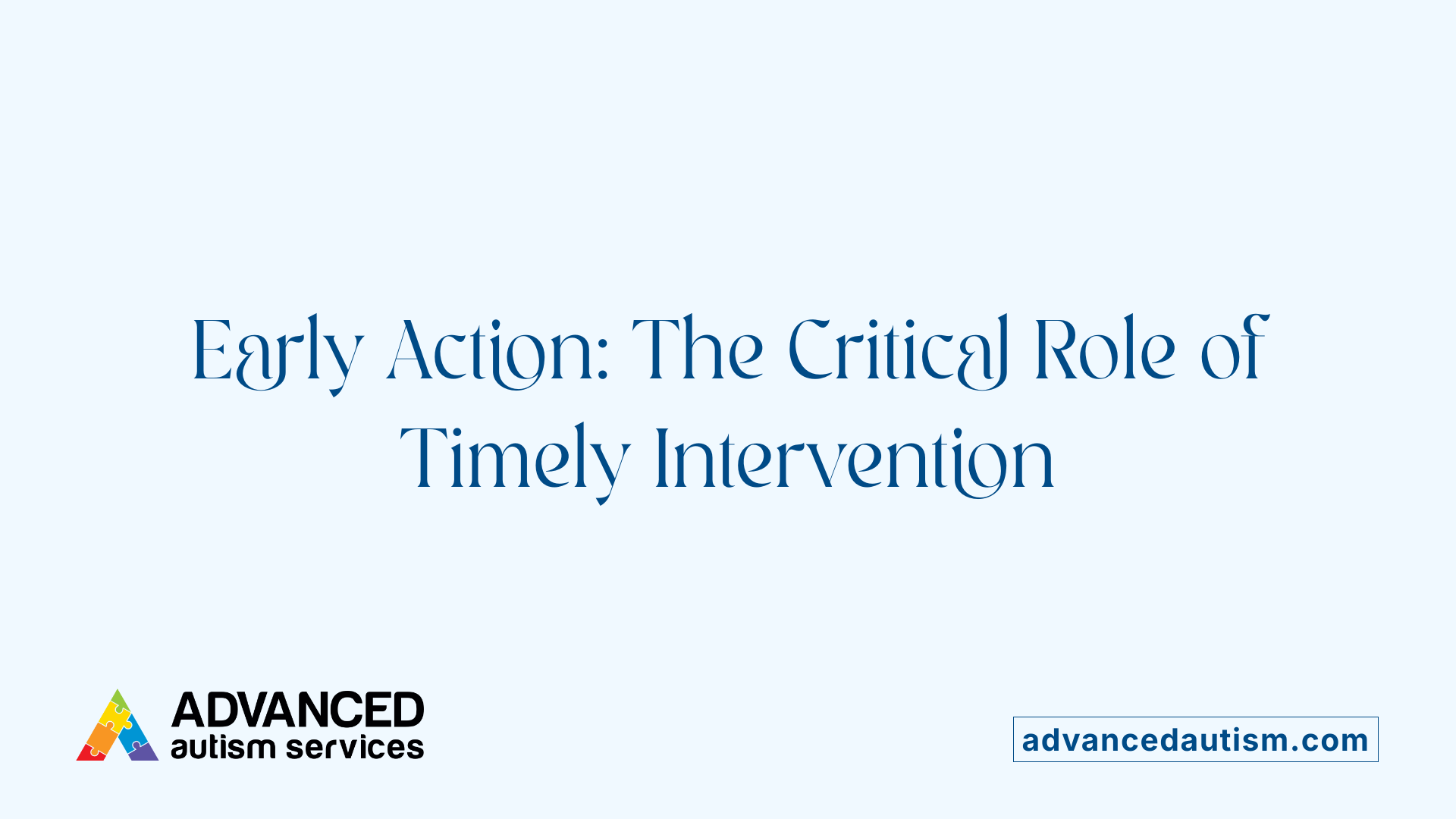
What Are the Benefits for Speech, Social, and Motor Skills?
Early intervention plays a critical role in supporting children with mild autism by targeting key developmental areas such as speech, social interaction, and motor abilities. These interventions improve communication skills, helping children better understand and use both verbal and nonverbal cues. Social skills training enables them to navigate social situations more effectively, fostering stronger peer relationships.
Motor skills also benefit from early support, enhancing coordination and independence in daily activities. By focusing on these three skill areas early on, children gain foundational tools that influence their overall development.
How Does Early Intervention Affect Long-term Developmental Outcomes?
Starting therapeutic support early in life leads to better long-term outcomes for children with mild autism. Research shows that early intervention improves self-care abilities, increases independence, and positively impacts academic and social success over time. It helps reduce challenging behaviors and supports emotional regulation, which is essential for adapting to new environments and experiences.
Through continuous progress monitoring and individualized programming, these early efforts build pathways for sustained growth and quality of life improvements.
Why Is a Combination of Therapy Modalities Recommended?
Combining different therapeutic approaches amplifies the benefits of early intervention. Applied Behavior Analysis (ABA) is often central, focusing on behavior modification through positive reinforcement. Complementary therapies such as Cognitive Behavioral Therapy (CBT) address anxiety and social skill challenges, while speech therapy improves language comprehension and expression.
Occupational therapy tackles sensory sensitivities and promotes day-to-day functioning. When these modalities work together, they provide comprehensive support, addressing multiple facets of development simultaneously.
What Is the Role of Early Diagnosis?
Early and accurate diagnosis is essential to ensure that children receive appropriate interventions during critical developmental windows. A multidisciplinary team approach—including psychologists, speech-language pathologists, and occupational therapists—uses standardized assessments and observations to identify mild autism.
By diagnosing early, families and providers can create tailored goals and select effective therapy programs, maximizing the child's developmental potential from a young age.
Towards a Better Future for Individuals with Mild Autism
Addressing mild autism requires a comprehensive understanding of the condition’s nuances and a multifaceted approach to intervention. Applied Behavior Analysis (ABA) therapy stands as a cornerstone treatment with a strong evidence base for improving core symptoms and functional skills. However, optimal outcomes emerge when ABA is integrated with complementary therapies such as speech and occupational therapy, and when families are fully engaged as partners in care. Continued research, particularly with larger and longer-term studies, is essential to refine best practices and tailor interventions to individual needs. Ultimately, early diagnosis, individualized support, and ongoing collaboration between professionals and families empower individuals with mild autism to realize their potential and lead fulfilling lives.
References
- Applied Behavior Analysis (ABA)
- Applied Behavior Analysis in Children and Youth with Autism ...
- Treatment and Intervention for Autism Spectrum Disorder
- Behavioral Therapy for Autism Spectrum Disorder in Children
- Understanding the Spectrum: Key Mild Autism Characteristics
- Level 1 Autism Explained: What to Expect and How to Help
- Applied Behavior Analysis in Children and Youth with Autism ...
- How to Track Progress in ABA Therapy Through Reports ...
- How to Measure ABA Therapy's Effectiveness
- Applied Behavior Analysis (ABA)



